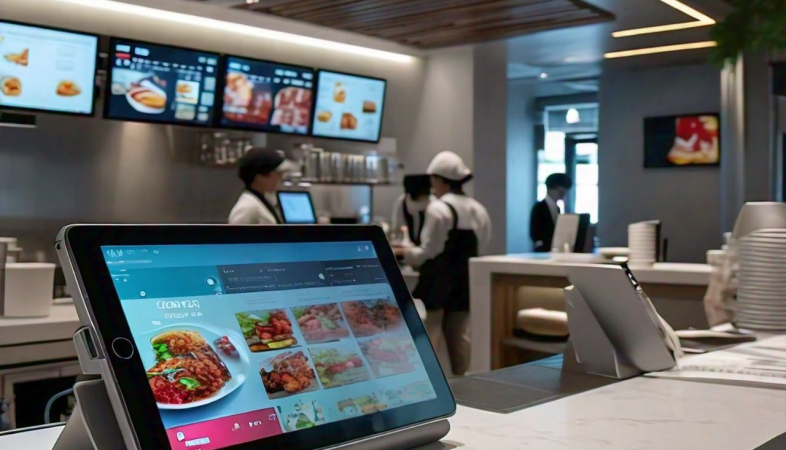The Integration of Tablets for Streamlined Billing Processes in Restaurants
The integration of tablets for billing processes in restaurants represents a transformative shift in the dining industry, offering efficiency, convenience, and enhanced customer experiences.
The integration of tablets for billing processes in
restaurants represents a significant shift in the traditional dining
experience, offering both efficiency and convenience for customers and staff
alike. Let's delve into the advantages and implications of this innovative
approach to restaurant billing.
Streamlining Operations:
Tablets streamline the billing process by digitizing it, eliminating the need for traditional paper receipts and manual calculations. With tablets, servers can input orders directly into the system, reducing errors and minimizing delays in processing payments. This efficiency not only speeds up table turnover but also enhances overall customer satisfaction.
Enhanced Customer Experience:
The use of tablets in billing enhances the overall dining experience for customers. It allows them to review their orders, split bills, and add gratuities with ease, all from the convenience of their table. Additionally, tablets can provide interactive menus, suggest pairings or promotions, and even offer entertainment options, further enriching the dining experience.
Improved Accuracy and Transparency:
By digitizing the billing process, tablets ensure greater accuracy and transparency in transactions. Customers can see itemized bills in real-time, reducing the likelihood of discrepancies or misunderstandings. Moreover, the automated calculations minimize human errors, leading to more precise billing and fewer disputes.
Customization and Personalization:
Tablets offer opportunities for customization and personalization, allowing restaurants to tailor the billing experience to individual preferences. Customers can choose their preferred payment methods, opt-in for loyalty programs or promotions, and provide feedback directly through the tablet interface. This level of customization fosters stronger customer engagement and loyalty.
Data Collection and Analysis:
The use of tablets enables restaurants to collect valuable data on customer preferences, ordering patterns, and spending habits. This data can be analyzed to gain insights into customer behavior, inform menu optimizations, and develop targeted marketing strategies. By leveraging data analytics, restaurants can better understand their customers and drive business growth.
Adaptation to Digital Trends:
In an increasingly digital world, the integration of tablets into restaurant billing processes aligns with evolving consumer preferences for convenience and technology-driven experiences. It demonstrates a commitment to innovation and positions restaurants as forward-thinking establishments that embrace digital trends.
Challenges and Considerations:
While the use of tablets in billing offers numerous benefits, it also presents challenges that restaurants must navigate. These include the initial investment in hardware and software, staff training requirements, and potential technical issues such as connectivity issues or software glitches. Moreover, some customers may prefer traditional paper receipts or have concerns about privacy and security.
The integration of tablets for billing processes in restaurants represents a transformative shift in the dining industry, offering efficiency, convenience, and enhanced customer experiences. While challenges exist, the benefits of streamlining operations, improving accuracy, and adapting to digital trends make tablets a valuable tool for restaurants looking to optimize their billing processes and stay competitive in today's evolving market.
.png)






















 at The Aviyaan.jpeg)






